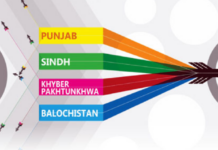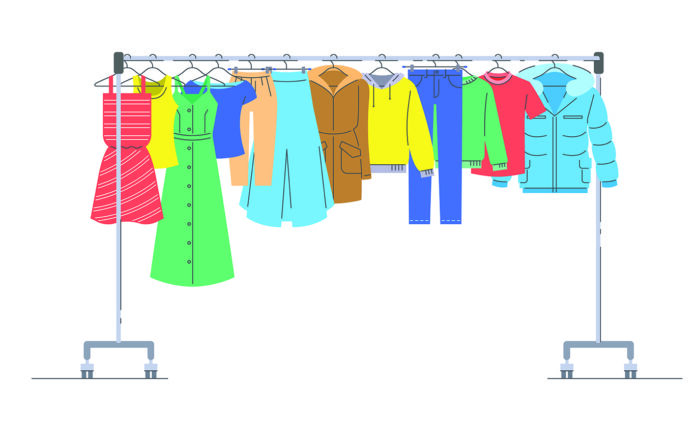The landa bazaar, or as we call it here in Karachi, Sunday bazaar, is not for the faint of heart. If you can’t weaponize your elbows to make your way into the market, you will be left behind panting and hyperventilating. But amidst this chaos, overwhelming enough to make a grown man cry, is a sea of tables, stalls and sections scattered with all things imaginable to man, from clothes, shoes, jewelry and makeup to curtains, rugs, crockery and even appliances.
On the other side of Clifton, near Teen Talwar, a similar commotion is seen outside small shops displaying mini dresses, skirts, sparkly party tops, swimsuits, bralettes and all manner of other clothes. This is Karachi Playhouse, a market of preloved clothes and accessories and the ultimate goldmine for a party girl’s dream wardrobe.
And somewhere in the middle of these two markets, hovering above the sea and the city, stands Dolmen Mall Clifton. Exactly 23 steps into the mall and you’re greeted by Lama, a high-street, multi-fashion brand that claims to combine functional design with popular fashion: a Zara inspired outlet that has grown significantly over most major cities in the country. A smaller but quite similar group of women are seen strolling through the store, lazily sifting through the racks, sometimes stopping to feel the soft linen fabric between three fingers and turning over collars to eye the price tags dangling by a black thread.
And those who aren’t seen at any of these scenes, are sitting at home, scrolling incessantly on their phones, jumping from one online thrift shop to another Instagram thrift page. The content in this publication is expensive to produce. But unlike other journalistic outfits, business publications have to cover the very organizations that directly give them advertisements. Hence, this large source of revenue, which is the lifeblood of other media houses, is severely compromised on account of Profit’s no-compromise policy when it comes to our reporting. No wonder, Profit has lost multiple ad deals, worth tens of millions of rupees, due to stories that held big businesses to account. Hence, for our work to continue unfettered, it must be supported by discerning readers who know the value of quality business journalism, not just for the economy but for the society as a whole.To read the full article, subscribe and support independent business journalism in Pakistan
























